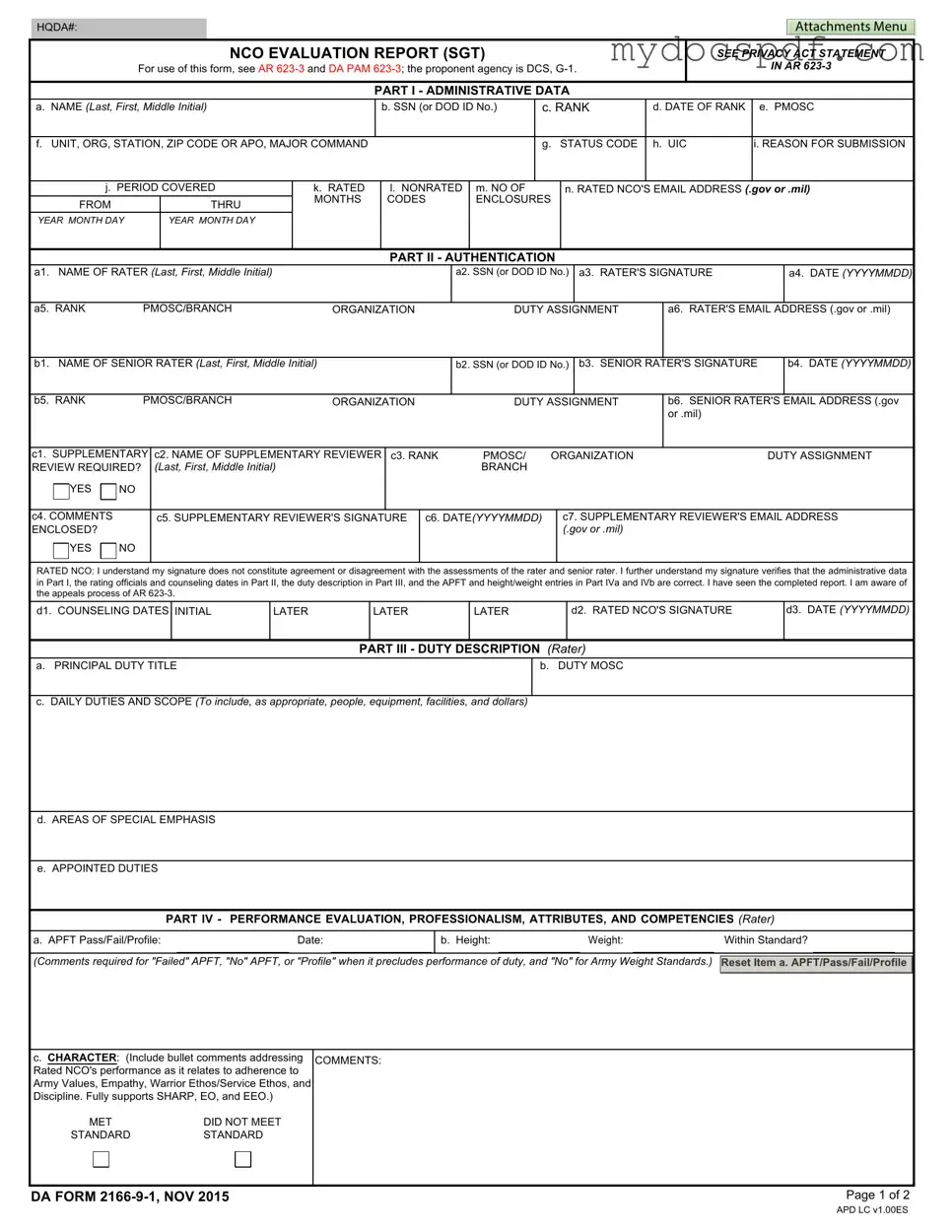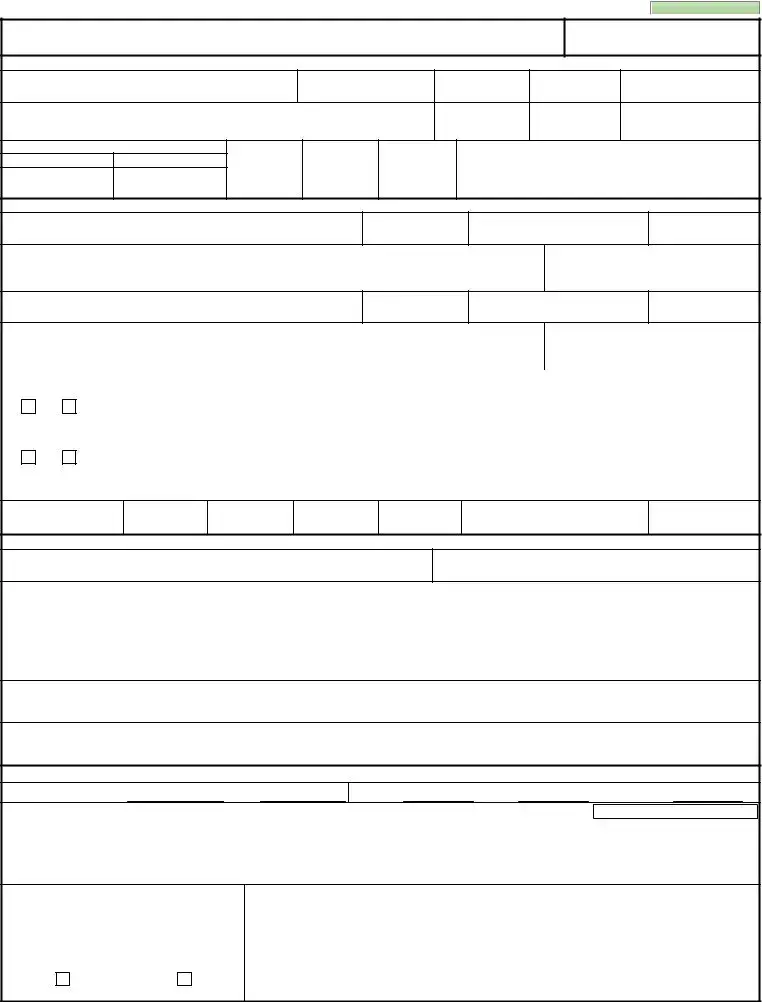The DA 2166-9-1 form serves as a crucial tool in evaluating the performance of Non-Commissioned Officers (NCOs) within the U.S. Army. This evaluation report is designed specifically for Sergeants and plays a vital role in documenting their professional development and overall effectiveness. The form captures essential administrative data, including the NCO's name, rank, and unit information, ensuring accurate identification and context for the evaluation. It also requires input from both the rater and senior rater, who provide assessments of the NCO's performance across various attributes, such as character, presence, intellect, leadership, development, and achievement. These evaluations are not merely subjective; they are grounded in specific criteria and expectations outlined in Army regulations. Furthermore, the form includes sections for counseling dates and signatures, reinforcing accountability and transparency in the evaluation process. The DA 2166-9-1 is not just a bureaucratic requirement; it is a comprehensive assessment that helps shape the future of NCOs and, by extension, the Army itself.


